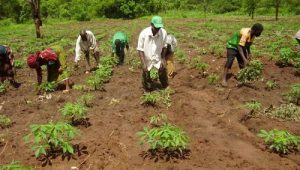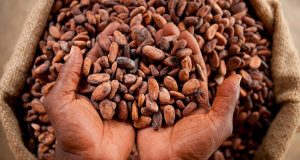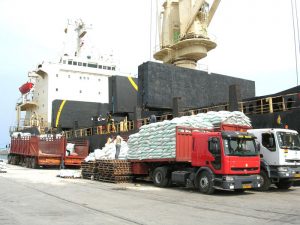Government, as part of its agriculture modernization programme this year, will create a database with a special feature for tracking fertilizer and seed distribution to farmers under the ‘Planting for Food and Jobs’ (PFJ) policy.
The electronic database, according to provisions in this year’s agriculture sector budget, will ultimately seek to improve tracking, targetting, efficiency and transparency in public support programmes to the sector; and will reduce malpractices in the distribution value chain.
Government is prioritizing agricultural modernization as a major intervention under GhanaCARES. The objective is to build on existing programmes such as Planting for Food and Jobs and Rearing for Food and Jobs, by supporting commercial farming and agro-processing for value addition in order to ensure rapid competitive food-import substitution, job creation, exports and industrialization.
A critical component of the agricultural modernization programme is to register and create an electronic database of farmers to provide ready access to relevant information such as farm size, digital location and types of crops, yields and market linkages. Already, a total of 579,662 individuals comprising 547,126 farmers and 32,536 value-chain actors have been registered for the intervention as at end of 2021.
With the deployment of additional electronic recording devices and increase in personnel in the database, MoFA said the registration rate reached 90 percent by end of 2021 for a successful deployment of the platform this year.
Hence, the anticipated increase in tracking and monitoring of fertilizer in the 2022 PFJ season will enable government to curb the level of smuggling and reduce the amount of financial losses to the sector.
The Food and Agriculture Ministry has previously indicated that despite efforts to prevent fertilizer smuggling by some unscrupulous persons, the challenge still persists – with the country losing more than GH¢100million to the canker annually.
In 2018 alone, diversion of coupons and unaccounted fertilizer under the PFJ cost government some US$12million.
This phenomenon has led to calls for stakeholders to remain vigilant in tackling the menace, particularly in notable high risk points including Hohoe, Shai Osudoku, Gushegu, West Mamprusi, Mamprugu Moagduri, Pusiga and the Sissala East districts where the scourge is endemic.
Through support of the CARES programme, a comprehensive strategy has also been developed to make information more accessible to attract youth into agriculture.
The agribusiness window of the MoFA web page, which will be ready by March 2022, is being re-designed to provide information on rewarding opportunities in agriculture.






